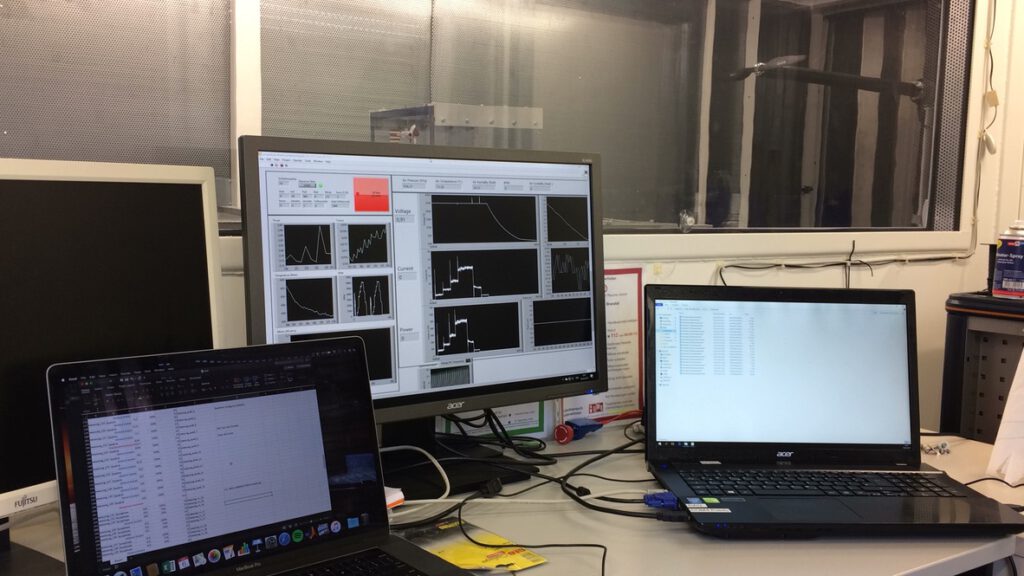Vertical Take-Off and Landing Unmanned Aerial Vehicles (VTOL UAVs) provide civilian, commercial, or military applications worldwide. Especially for cargo transport, a fixed-wing VTOL UAV supplies versatility, great range and high speeds. While its wing-mounted propellers achieve the great distance and velocity during the cruise phase, additional rotors on the fuselage lift and land the aircraft vertically. Due to the large flow blocking area of the fuselage, the thrust of these propellers is reduced. Further battery power is needed to maintain the performance, reducing the space for cargo within the aircraft along with the range. It is therefore of high importance to find the optimized position of the rotor on the fuselage.
Under the supervision of the Chair of Aircraft Design, I was given the opportunity to analyze the thrust loss experimentally at the engine test stand.
